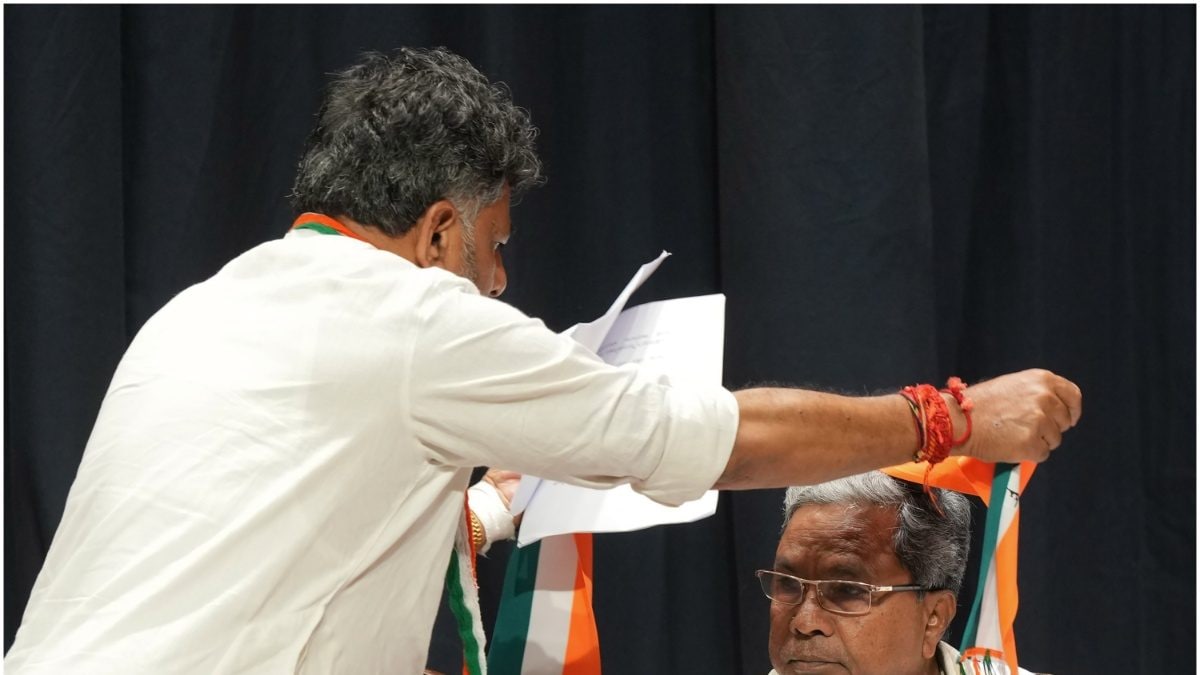Siddaramaiah may have got his wrong finger inked on polling day, but his finger is clearly on the pulse of the people of Karnataka who voted the Congress back to power in this southern state with 136 seats.
“Anybody can contest from Varuna (Siddaramaiah’s seat), but the winner will always be my brother. He is very popular. He has been a chief minister once before and administered the state well. I would be thrilled to see him at Vidhan Soudha as a chief minister again,” the Congress leader and CM-designate’s brother Siddegowda said with confidence to News18 just days before Karnataka voted.
Today, Siddegowda’s wish has come true once again as his brother ascends the steps of the majestic Vidhan Soudha to be sworn in as Karnataka’s 23rd chief minister after the spectacular victory of the Congress in the 2023 assembly polls.
Sources have told News18 that while Siddaramaiah will be sworn-in as chief minister, DK Shivakumar will be the deputy CM. There is also a proposal for rotational chief minister-ship which, sources said, did not sit well with DKS but cajoling from the Gandhis has resolved the issue.
Siddu’s Swansong
There certainly was a race between Siddaramaiah and Karnataka Congress chief DK Shivakumar on who would be the chief ministerial face of the Congress. However, the party high command decided to give the coveted post to the popular leader who was, as sources say, promised the CM seat if he was ready to give up his demand of contesting from the Kolar part of the Varuna seat which he won by a margin of 46,006 votes.
Siddaramaiah had announced that this would be his last election and had secretly hoped that the Congress’s win and being chief minister one more time would be the ‘perfect swansong’.
Self-taught, seasoned politician
Born to Siddarame Gowda and Boramma in a remote village called Siddaramanahundi of Mysore district, Siddaramaiah, who goes by a single name, is the second among four brothers and a sister. He belongs to the Kuruba community (7 per cent) which is regarded the third-most influential caste in Karnataka after the Lingayats (17-18 per cent) and the Vokkaligas (15-16 per cent).
The seasoned politician, who carries an image of a rustic neta wearing his classic white ‘panche’ (dhoti) and crisp white kurta with a gold-bordered ‘angavastra’ (traditional shawl), is not only considered one of Karnataka’s popular leaders but also one who has emerged as the undisputed leader of the AHINDA (a Kannada acronym for Alpasankhyataru or minorities, Hindulidavaru or Backward classes, and Dalitaru or Dalits).
The self-taught politician went from grazing cattle and tilling the fields to educating himself to become a lawyer and later the chief minister of Karnataka in 2013. Apart from Devaraj Urs (1972-77), he is the only chief minister to have completed five years in office in Karnataka. An HD Deve Gowda protégé, Siddaramaiah had earlier narrowly lost the chief minister’s job in 1996 after then CM Deve Gowda was chosen to become India’s prime minister.
From Politician By Chance to Cong’s Poster Boy
Siddaramaiah’s political journey is intertwined with chance encounters and twists of fate. If not for a fateful meeting with lawyer Nanjunda Swamy in 1978, he may have never ventured into the world of politics. Swamy, who spotted him at one of the district courts, was mighty impressed with Siddaramaiah’s political acumen and urged him to take the plunge. Thus began the veteran leader’s foray into the political sphere.
A staunch socialist, Siddaramaiah’s political base was shaped by his admiration for Dr Ram Manohar Lohia’s brand of socialism.
His political debut in the Karnataka Assembly was in 1983 after being elected on a Lok Dal ticket from the Chamundeshwari constituency. He later joined the Janata Party which merged with other parties to become the Janata Dal in the year 1988. A decade later, when the Janata Dal split into Janata Dal (United) and Janata Dal (Secular), Siddaramaiah decided to go with his mentor HD Deve Gowda and was made the state president of the JDS.
In a dramatic turn of events, Siddaramaiah was expelled from the JD(S) in 2005 for anti-party activities. Undeterred, he decided to launch his regional party ABPJD but ultimately joined the Congress in 2006. He later won the by-election in December 2007 from the Chamundeshwari constituency, cementing his position as a formidable force in Karnataka politics.
He is seen as a mass leader of the backward classes and a man who introduced the populist Bhagya schemes — Anna (rice), Ksheera (milk), Shaadi (marriage for the underprivileged), etc. He also has the distinction of presenting as many as seven state budgets as finance minister. Such is his charisma and rustic way of communication that he has his audience riveted and many times in splits while addressing public meetings.
Controversy’s Favourite Child
Known to be one who does not mince his words, Siddaramaiah has been the target of and has made several controversial statements in the run-up to the elections.
He was targeted by Karnataka minister CN Ashwath Narayan who commented that Siddaramaiah “should be knocked out and sent off like the 18th-century ruler of the erstwhile Mysuru Kingdom, Tipu Sultan”.
Siddaramaiah also courted controversy by calling the BJP chief minister Basavaraj Bommai a corrupt Lingayat CM which the party was quick to use against him, saying he was insulting the Lingayat community. He also called Bommai “a puppy that trembles in front of Prime Minister Narendra Modi” as well as said Veer Savarkar was influenced by Hitler to claim he was a Hindu but he was against Hindutva as Hindutva is against the Constitution.


